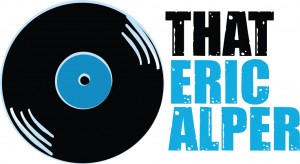When Green Day released American Idiot in 2004, it marked a turning point in the band’s career. Framed as a concept album and “punk rock opera,” it blended narrative ambition with political urgency and became one of the best-selling and most acclaimed albums of its decade. While many fans know the singles and storyline, the album contains a wealth of lesser-known details. Here are five facts that deepen its legacy.
1. American Idiot was built on abandoned material
Before writing American Idiot, Green Day had nearly completed an entirely different album titled Cigarettes and Valentines. After the master tapes were stolen from the studio, the band chose not to recreate the sessions. Instead, they scrapped the material and began writing from scratch. This decision led to the conceptual direction that defined American Idiot. The abandoned album later influenced bonus tracks and live performances, but it was never officially released.
2. The album was recorded in sequence from start to finish
Green Day took an unusual approach in the studio by recording the songs in the order they appear on the album. Each track was completed before moving on to the next. This method helped preserve the conceptual narrative and ensured a consistent tone throughout the project. It also required more planning and discipline compared to typical recording sessions, which often involve tracking parts in a non-linear sequence. Few albums of this scale have been made this way.
3. “Wake Me Up When September Ends” stands apart from the album’s concept
While most of American Idiot follows a defined storyline, “Wake Me Up When September Ends” originates from a personal loss. Billie Joe Armstrong wrote the song about the death of his father, who passed away in September 1982. The title came from a phrase Armstrong said to his mother during the funeral and kept in his memory for years. Although it fits thematically within the album’s mood, the song functions more as a standalone tribute than a narrative chapter. Its inclusion adds emotional depth beyond the political themes.
4. The band constructed a private pirate radio station during sessions
While demoing American Idiot at Studio 880 in Oakland, the band set up a pirate radio station inside the studio. They used it to broadcast jam sessions, in-progress recordings, and prank calls to local radio frequencies. This DIY setup created a sense of freedom and experimentation during the early writing process. The experience of curating and broadcasting their own content helped reinforce the album’s anti-mainstream tone. It reflected the band’s continued interest in independent media.
5. The artwork was directly inspired by Saul Bass and Communist poster design
The cover art for American Idiot was created by Chris Bilheimer, who had previously worked with the band. The design was influenced by Saul Bass’s work on The Man with the Golden Arm as well as propaganda art found in galleries on Melrose Avenue in Los Angeles. The hand grenade shaped like a heart was drawn from a lyric in “She’s a Rebel.” The artwork aimed to reflect urgency, uniformity, and visual impact. It quickly became one of the most recognizable covers of the 2000s.
American Idiot was a carefully planned and executed project that redefined their place in modern rock. These lesser-known details reveal the discipline and experimentation behind the album’s creation, offering a clearer picture of its legacy as both a political and artistic statement.







